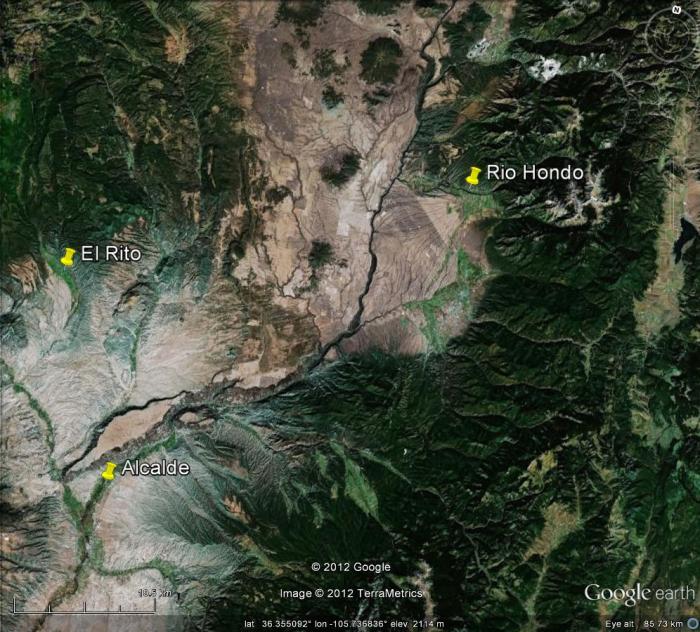
Currently we are conducting acequia hydrology-related research in different acequias of three irrigated valleys in northern New Mexico.
Different forage, fruit, vegetable and alternative high-value crops using primarily border or furrow irrigation, by far the most common practice in the region, are grown in these acequia valleys.
Irrigation ditches clearly define the bounds of the irrigated alluvial floodplain corridors. Croplands in these irrigated corridors are representative of many sites throughout the semi-arid western U.S. Alfalfa and pasture grass forages are grown on most of the irrigated acres in these valleys and the region as a whole.
In acequia systems, river water is diverted throughout the irrigation season into mostly unlined ditches that supply individual private farms along their length and return unused ditch flow to the river.
Riparian vegetation along the river bank is composed primarily of phreatophytic tree species such as willow, cottonwood, and Russian olive.
